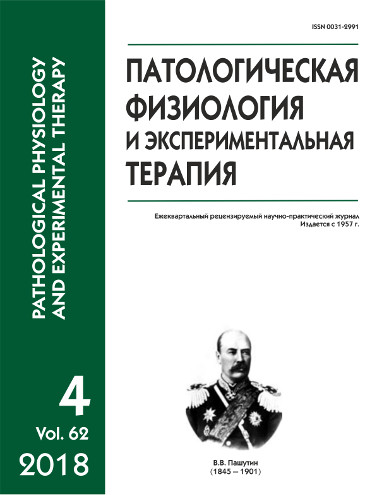Activities of regulatory RNAs that affect development of tumor cells in patients with laryngeal cancer
Abstract
Aim. To study the role of non-coding RNA (long RNAs and microRNAs) expression and protein-coding genes in the pathogenesis of laryngeal cancer to determine their prognostic significance for oncotransformation. Methods. The expression of long non-coding RNAs, microRNAs and protein-coding genes was examined in biopsy samples (fresh frozen tissue) and peripheral blood samples from 35 patients with laryngeal squamous cell cancer (LSCC) at T1N0M0 — T4N1M0 stages. Samples of surrounding, histologically unchanged tissues collected from the same patients were used as control. Gene expression was evaluated in blood samples from 27 healthy donors. Contents of gene mRNAs (p53, CCND1, ORAOV1, hPTEN), long non-coding RNAs (IncRNA) (NEAT1, MALAT1, ROR), and mature miRNAs (miR-21, miR-27a, miR-34a, miR-101, miR-124, miR -125b, miR-181a) were measured in tissue and blood using real-time PCR. Results. Contents of CCND1 and hPTEN gene mRNAs, lncRNAs (NEAT1, MALAT1), miR-21, and miR-27a were increased in blood of patients with LSCC. Levels of CCND1 and ORAOV1 gene mRNAs were significantly higher in biopsy samples from stage 3-4 patients compared to stage 1-2 patients. A similar expression pattern was observed for lncRNAs NEAT1 and MALAT1 and miR-101. On the other hand, expression of miR-27a and miR-124 was lower at later stages than at stages 1-2. Conclusion. The studied lncRNAs, microRNAs and protein-coding genes can be used in development of a biomarker panel for individual prognosis of the disease.






